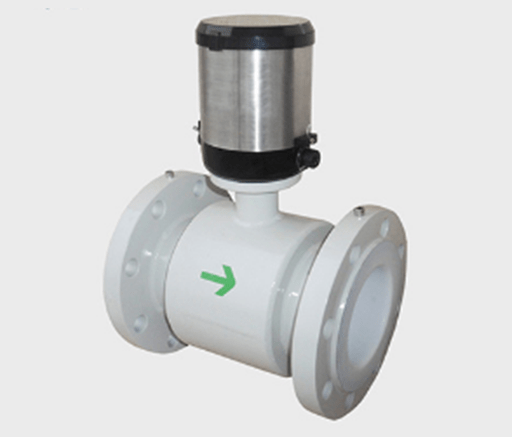
Figure 1: A thermal mass flowmeter.
TMF is the abbreviation of thermal mass flowmeter. The thermal mass flowmeter can also be called the thermal gas flowmeter. Because most thermal mass flowmeters are used to measure gas and only a few is used to measure the flow of micro liquid at present. The measuring temperature of the thermal mass flowmeter can reach up to 500 ℃.
Thermal gas mass flowmeter is a new type of flow instrument. It can easily and accurately detect the mass flow of air, nitrogen, hydrogen, oxygen, chlorine, natural gas, flue gas and other gases (except acetylene gas) flowing in the pipeline without temperature and pressure compensation. It can be widely used in the process control and gas flow measurement of petroleum, chemical industry, metallurgy, electric power, water treatment, papermaking, food, medicine, cement, textile and various production and scientific research institutions.
1. What It is
Thermal mass flowmeters is a kind of flow meter that measures the fluid mass flow by using the change of temperature field generated when the fluid flows through the pipe heated by external heat source. And It can also be measured by using the relationship between the energy required for the fluid temperature to rise to a certain value when heating the fluid and the fluid mass.
2. Working Principle

Figure 2: Working principle of a thermal mass flowmeter.
The working principles of the two flowmeters above are summarized as heating. One is to heat the fluid flowing through the pipeline, and the other is to heat the fluid. In general, they all test fluid quality through the heat exchange between fluid and heat source. Thermal mass flowmeter is mostly used to complete the quality detection of gas. It will flow through two thermistors in the process of gas flowing.
The gas first flows through a thermistor as a heater to keep the temperature difference between it and the gas constant. The greater the gas flow rate, the greater the supply current of the circuit. Then it flows through a thermistor used as a temperature detection element to detect the gas temperature. The flow rate of gas can be obtained by the functional relationship between the supply current of the circuit and the supply current and gas flow rate.
3. Classification
Thermal mass flowmeter can be divided into contact thermal mass flowmeter and non-contact thermal mass flowmeter according to different heat sources and temperature measurement methods.
3.1 Contact Thermal Mass Flowmeter

Figure 3: A contact thermal mass flowmeter.
The heating element and temperature measuring element of this mass flowmeter are placed in the pipeline of the measured fluid and in direct contact with the fluid. It is often called Thomas flowmeter which is suitable for measuring the large mass flow of gas. Because the heating and measuring elements are in direct contact with the measured fluid, the elements are vulnerable to fluid corrosion and wear affecting the measurement sensitivity and service life of the instrument. When measuring high flow rate and corrosive fluid, it should not be selected which is the disadvantage of contact type.
3.2 Non Contact Thermal Mass Flowmeter

Figure 4: A non contact thermal mass flowmeter.
The heating and temperature measuring elements of the flowmeter are placed outside the fluid pipeline and it is not in direct contact with the measured fluid which overcomes the disadvantage of contact type.
4. Advantages and Disadvantages of Thermal Mass Flowmeter
4.1 Advantages
Thermal mass flowmeter has been widely used in the mass flow measurement of boiler air flow, coking plant gas flow, gas flow generated in industrial production, natural gas and other fluids. The thermal mass flowmeter has the advantages of low pressure loss, large flow range, no moving parts, simple structure, high accuracy and various types which can meet the detection of mass flow of fluid at various flow rates in various environments.
4.2 Disadvantage
But at the same time, it also has the disadvantages of slow reaction speed, difficult to measure the mass flow of viscous liquid, and there are deposited scales after repeated use which need to be cleaned in time.
Related Info
what is a circuit breakerA brief introduction to the chiller
Why refrigeration system clogged
Refrigeration compressor frosting reasons solutions


